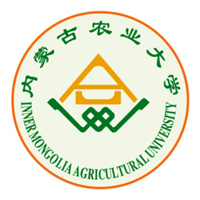Inner Mongolia Agricultural University is a multidisciplinary university with agriculture and forestry as its main disciplines and grassland animal husbandry as its characteristics. It has eight disciplines, including agriculture, engineering, science, economics, management, literature, law, and art. It has a complete higher education system for training higher vocational colleges, bachelor's, master's and doctoral students. In 2001, it became a university that was supported by the "one province, one school" program of the National Western Development Program. In 2012, it became a "province-ministerial co-construction" university of the State Forestry Administration (now the State Forestry and Grassland Administration) and the Autonomous Region People's Government. In 2013, it entered the ranks of colleges and universities supported by the National "Central and Western Higher Education Revitalization Plan". Historical evolution In 1952, the animal husbandry and veterinary departments of the former Hebei Agricultural College and Pingyuan Agricultural College and the veterinary major of Shanxi Agricultural College were moved to Guisui (now Hohhot) as a whole, and the first undergraduate college in the Inner Mongolia Autonomous Region, the Inner Mongolia Animal Husbandry and Veterinary College, was established. In 1958, the Inner Mongolia Forestry College was established. In 1960, the Inner Mongolia Animal Husbandry and Veterinary College was renamed the Inner Mongolia Agricultural and Animal Husbandry College. In 1999, Inner Mongolia Agricultural and Animal Husbandry College and Inner Mongolia Forestry College merged to form Inner Mongolia Agricultural University. The school now has 24 colleges (departments) including the College of Animal Science. There are 46,362 full-time students in general higher education (29,963 in the main campus), including 4,539 master's students (4,442 in the main campus), 730 doctoral students, and 137 international students. The school covers a total area of 14,600 mu, the main campus covers an area of 2,325.4 mu, the main campus covers an area of 676,000 square meters, and there are 4 standard track and field stadiums (halls). The total value of teaching and scientific research equipment is 1.44 billion yuan. The school currently has 1 national key discipline, 3 national key cultivation disciplines, 26 provincial and ministerial key (cultivation) disciplines, and 11 autonomous region first-class construction disciplines. In the fifth discipline evaluation, 1 discipline was rated "A" and 4 disciplines were rated "B". There are 13 postdoctoral research stations, 15 first-level doctoral degree authorization points, 25 first-level master's degree authorization points, and 16 master's professional degree authorization categories. There are 21 national first-class undergraduate major construction points and 14 autonomous region-level ones. There are 107 undergraduate majors in general higher education (92 in the main campus), 2 pilot projects of the National Excellent Agricultural and Forestry Talent Education and Training Program (including 8 majors), 7 national characteristic majors, 1 national undergraduate major comprehensive reform pilot project, 40 autonomous region-level brand majors, 6 autonomous region key construction majors, 1 autonomous region undergraduate major comprehensive reform pilot project, 5 majors have passed the national engineering education professional certification, and 7 majors have introduced the school-enterprise joint school-running mechanism. The three disciplines of agricultural science, "plant and animal science" and "environmental science and ecology" are among the top 1% in the world of ESI. The school currently has 2,659 faculty members (2,127 at the school headquarters), 830 teachers with senior professional titles (713 at the school headquarters); 1,344 teachers with master's degrees or above (1,134 at the school headquarters). One person was selected into the list of valid candidates for the election of academicians of the Chinese Academy of Engineering, one foreign academician of the Chinese Academy of Engineering was appointed full-time, two professors of the "Changjiang Scholars Program", two people funded by the "National Outstanding Youth Science Fund", and two people funded by the "National Excellent Youth Fund", two leading talents in scientific and technological innovation of the "Ten Thousand Talents Program" of the Organization Department of the CPC Central Committee, one young top talent, nine national candidates of the "Million Talents Project", four Shennong Young Talents, 93 experts enjoying special government allowances from the State Council, 55 young and middle-aged experts with outstanding contributions in the country and autonomous region, 15 outstanding returned overseas students in the country and autonomous region, and three national May 1st Labor Medals and advanced workers. There are 11 people who have won the Outstanding Talent Award of Inner Mongolia Autonomous Region, 18 scientific and technological personnel who have made outstanding contributions to the front line of industrial, agricultural and animal husbandry production in the autonomous region, 1 person who has won the National "Young Female Scientist Award", 4 chief experts of the Autonomous Region's "333 Talent Project", 16 first- and second-level candidates of the "New Century 321 Talent Project", 1 person who has been selected as the "Grassland Talent Academician Training Candidate", 7 "Grassland Talent Leading Talents", 115 "Grassland Talents", and 42 Grassland Talent Teams. Teaching work The school currently has 11 national first-class courses, 5 national quality courses, 2 national quality resource sharing courses, 41 autonomous region first-class courses, 1 autonomous region-level course ideological and political demonstration course, 1 autonomous region college aesthetic education public art education quality course, 72 autonomous region-level quality courses, and 4 high-quality quality courses. It has been approved as one "National College Huang Danian-style Teacher Team", 2 national forestry and grassland teaching masters, 28 autonomous region-level teaching masters, and 18 autonomous region-level teaching newcomers. It has won 8 national teaching achievement awards and 103 autonomous region teaching achievement awards. There are 1 national talent training model innovation experimental zone, 2 national experimental teaching demonstration centers, 1 national college student off-campus practice education base, 1 national college student cultural quality education base, 3 first batch of agricultural science and education cooperation talent training bases of the Ministry of Education and the Ministry of Agriculture and Rural Affairs, 9 autonomous region-level experimental teaching demonstration centers, and 1 autonomous region science popularization demonstration base. It has been approved as the first batch of labor education practice bases for primary, secondary and high schools in the autonomous region. There are 2 construction sites of modern industrial colleges in the first batch of autonomous region-level undergraduate colleges. In the past three years, it has been approved to edit 64 provincial and ministerial planning textbooks, 1 national textbook construction advanced individual, 4 China Agricultural Science and Education Fund textbook construction research projects, 16 autonomous region-level teaching achievement awards, and 1 national education and teaching reform research project and 122 autonomous region-level projects. Since the 13th Five-Year Plan for Scientific Research, the school has successively hosted and undertaken more than 3,400 scientific research projects of various levels and types, with a research income of 1.55 billion yuan. 462 National Natural Science Foundation projects, including Excellent Young Scholars, key and major project topics, key international cooperation and joint funds, were approved, with a total funding of 230 million yuan; 9 key projects of the National Key R&D Program were presided over, with a total funding of 2.6.6 billion yuan; relying on the "International Science and Technology Cooperation Base", it has presided over and undertaken 10 national international science and technology cooperation projects. As the first completing unit, it has won 75 provincial and ministerial science and technology and social science achievement awards, including 30 Inner Mongolia Autonomous Region Science and Technology Awards and 3 Outstanding Scientific Research Achievement Awards of Higher Education Institutions of the Ministry of Education; as the main completing unit, it has won 2 second prizes for national technological inventions. More than 2,600 high-level papers have been published and 1,326 patents have been authorized. The school's achievements in the development and utilization of characteristic resources such as lactic acid bacteria, Mongolian sheep, Mongolian horses, Mongolian cattle, wild camels, forage grass, corn, and oats have reached the international advanced level. 38 new animal and plant varieties have been approved (registered) as the first unit, among which the new Dumeng sheep variety cultivated by the school as the first technical completing unit and the first completing person has passed the national approval. 16 scientific and technological achievements have been transformed, and the transformation funds received are 60.64 million yuan. 98 national and provincial scientific research platforms (key laboratories, engineering research centers, field stations, integrated research platforms, and philosophy and social science bases, etc.) have been built, including the National Field Science Observatory, the National Dairy Technology Innovation Center Branch, the International Science and Technology Cooperation Base of the Ministry of Science and Technology, and the "Belt and Road" Joint Laboratory of the Ministry of Science and Technology. 39 provincial and ministerial scientific and technological innovation teams have been approved to be built, including the Ministry of Science and Technology, the Ministry of Education, the Ministry of Agriculture and Rural Affairs, the National Forestry and Grassland Administration, the Autonomous Region Science and Technology Department, and the Autonomous Region Education Department, 2 autonomous region leading talent teams, and 27 school-level innovation teams. The school was selected into the "Training Program for Chinese Intangible Cultural Heritage Inheritance Groups" jointly organized by the Ministry of Culture and the Ministry of Education, and is one of the first universities in the Inner Mongolia Autonomous Region to undertake this project. Social Services In 2018, the Rural Revitalization Research Institute was established to comprehensively coordinate and manage the transformation of scientific and technological achievements and social services. In 2022, it took the lead in establishing the "Inner Mongolia Rural Revitalization Research Institute" and hired 34 academicians to form a strategic advisory committee. In 2013, the school was included in the second batch of the National Higher Education New Rural Development Research Institute Construction Plan. 12 scientists and teachers of comprehensive experimental stations were selected for the relevant positions of the "13th Five-Year Plan" national modern agricultural industry technology system. The school was approved as a national professional and technical personnel continuing education base, a national vocational college teacher training base, and a training base for grassroots agricultural technology extension personnel of the Inner Mongolia Agriculture and Animal Husbandry Department. Four autonomous region science popularization demonstration bases were approved, and it was selected as one of the 100 excellent schools for rural revitalization talent training in the country. Since the "13th Five-Year Plan", through the "school-enterprise" cooperation, 10 rural revitalization comprehensive experimental stations, 68 characteristic industrial bases and scientific and technological service points have been built. The Inner Mongolia Seed Industry Collaborative Innovation Alliance (Center) and the Rural Revitalization Industry Service Center were established, and more than 100 strategic cooperation framework agreements were signed with companies such as Zhengda, Yili, Mengniu, Mengcao Drought Resistance, and Jinyu Group. The "Chi Lechuan Agricultural Expo Park" was jointly built with the People's Government of Tumote Right Banner to promote the deep integration of industry, academia and research. 7 probiotic strains, 2 strains, 11 veterinary vaccines, 7 new forage varieties and related technologies, and 8 invention patents have been transformed, with a total transformation amount of 60.64 million yuan. A total of 27 special funding projects for animal and plant variety breeding (selection) have bred 62 new strains, 15 new varieties, formulated 14 technical standards, and authorized 19 patents. In 2022, the Inner Mongolia Autonomous Region Science and Technology Achievement Transfer and Transformation Demonstration Base was approved. The open school has long cooperated with universities such as the University of Alberta in Canada, Massey University in New Zealand, University College Cork in Ireland, and the University of Life Sciences of Mongolia to carry out joint training for undergraduate, master and doctoral degrees. It has been approved as an important international cooperation platform such as the Ministry of Science and Technology's International Science and Technology Cooperation Base, the National Talent Attraction and Intelligence Demonstration Base, the Grassland Livestock System Sustainable Management Innovation Intelligence Attraction Base, and the "Belt and Road" China-Mongolia Polymer Joint Laboratory. It has joined 5 international university alliances such as the "Belt and Road South-South Cooperation" Agricultural Education Science and Technology Innovation Alliance, and established the "China-Mongolia Modern Agriculture and Animal Husbandry Education Science and Technology Innovation and Training Demonstration Mechanism". The university actively builds a new pattern of opening up education to the outside world. It has established inter-school cooperation and academic exchange relations with more than 70 universities and research institutions in more than 20 countries, including the United Kingdom, the United States, Canada, Australia, Russia, Japan and Mongolia, and established the "China-Canada Sustainable Agriculture Research and Development Center" and the "Malik Management Center Inner Mongolia Agricultural University Branch". In the past five years, the university has selected more than 200 teachers to visit and exchange abroad, sent more than 300 students to study and exchange abroad, and more than 700 experts and professors from abroad have come to the university for academic exchanges, visiting lectures, scientific research cooperation and other activities. Nearly 500 international students from 15 countries have been trained. In 2012, the university became the organizer of the Ministry of Commerce's foreign aid training project, hosted 35 multilateral and bilateral foreign aid trainings, and trained 938 trainees from 60 countries. In 2015, the university became the "Ministry of Education Overseas Study Training and Research Center", and trained more than 10,000 trainees. Social Honors The school party committee won the honorary title of "Advanced Grassroots Party Organization" in the country and the region, was awarded the "May 1st Labor Medal" in the region and the first batch of "Civilized Campus" in the region, and was selected as a national high-quality school for rural revitalization talent training. The Vocational and Technical College won the honorary title of "National Advanced Collective in the Education System", the Academic Affairs Office won the title of "Excellent Academic Affairs Office" in the National General Colleges and Universities, and the school Youth League Committee was rated as the national "May 4th Red Flag Youth League Committee". The school has won the titles of "National College and Technical School Student Volunteers Summer 'Three Going to the Countryside' Excellent Unit" and "Advanced Collective for Student Work and Graduate Employment in Colleges and Universities in the Region" for many times. The College of Animal Science was awarded the "National May 1st Labor Medal", the College of Veterinary Medicine was rated as the "Advanced Collective for National Unity in the Region", and the School History Exhibition Hall was identified as the "Inner Mongolia University Student Moral Education Base".
-
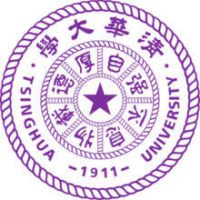
Tsinghua University
-

Peking University
-
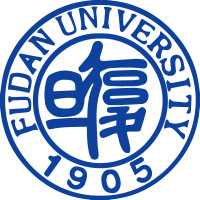
Fudan University
-

Wuhan University
-
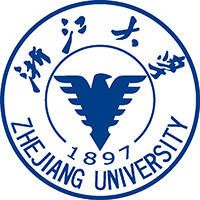
Zhejiang University
-

Nanjing University
-

Sun Yat-sen University
-

Tongji University
-

Renmin University of China
-

Jahrom University of Medical Sciences
-
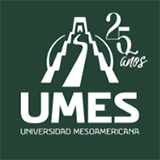
Mesoamerican University
-

Istmo University
-
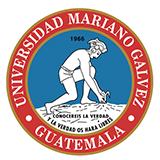
Mariano Galvez University of Guatemala
-

Regional University of Guatemala
-
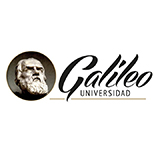
Galileo University
-
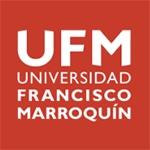
Francisco Marroquín University
-

Rafael Landívar University
-
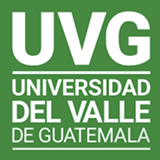
University of the Valley of Guatemala
-

University of San Carlos of Guatemala
-
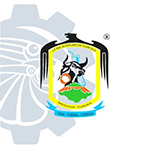
Technological Institute of Tlaxcala Plateau
-
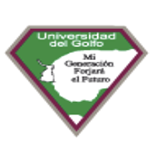
Golfo University
-
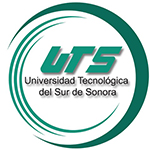
Technological University of South Sonora
-
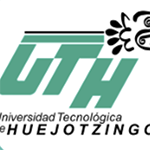
Technological University of Huejotzingo
-
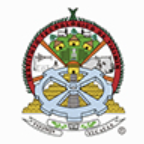
Tizimín Institute of Technology
-

Chilpancingo Institute of Technology

